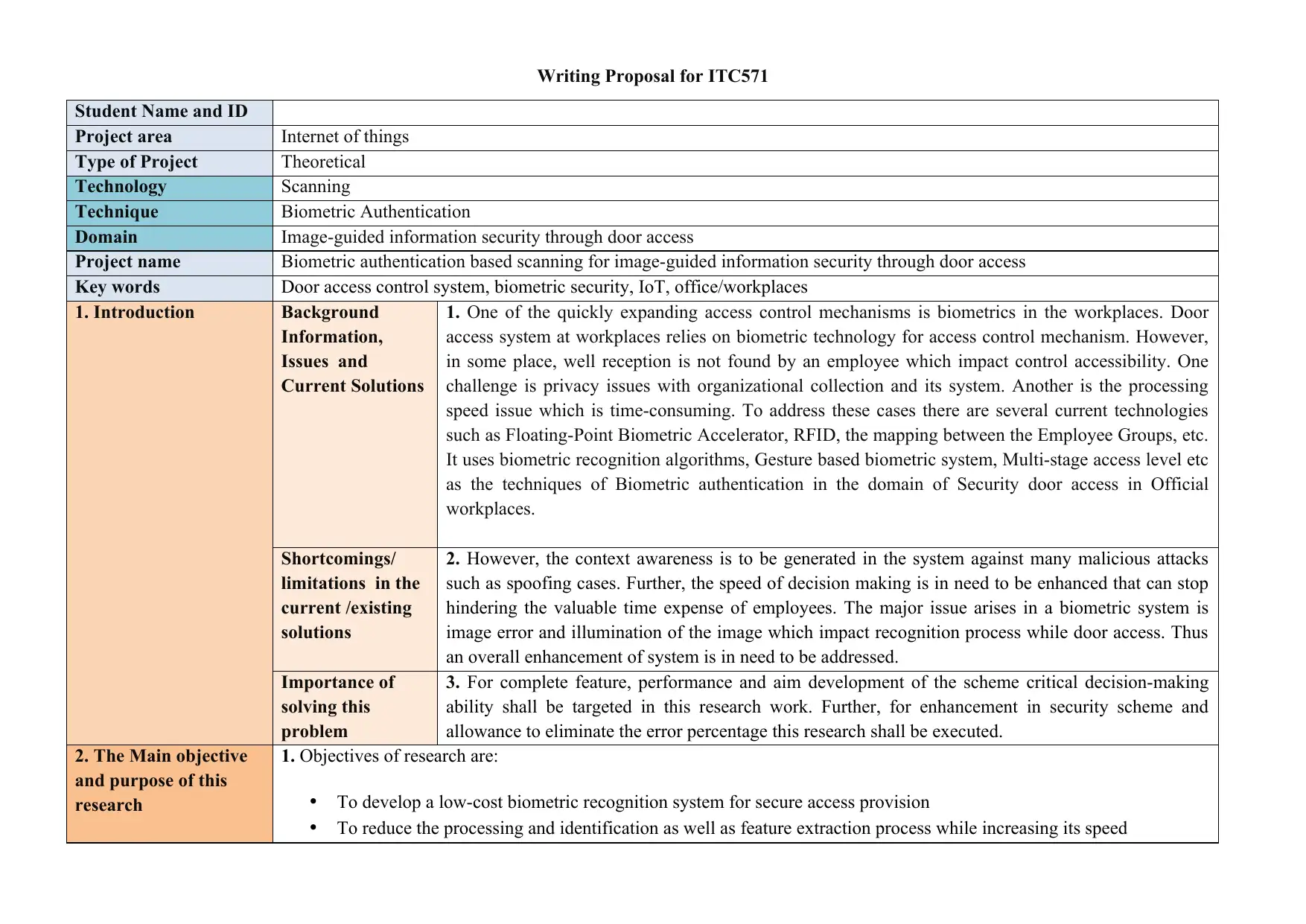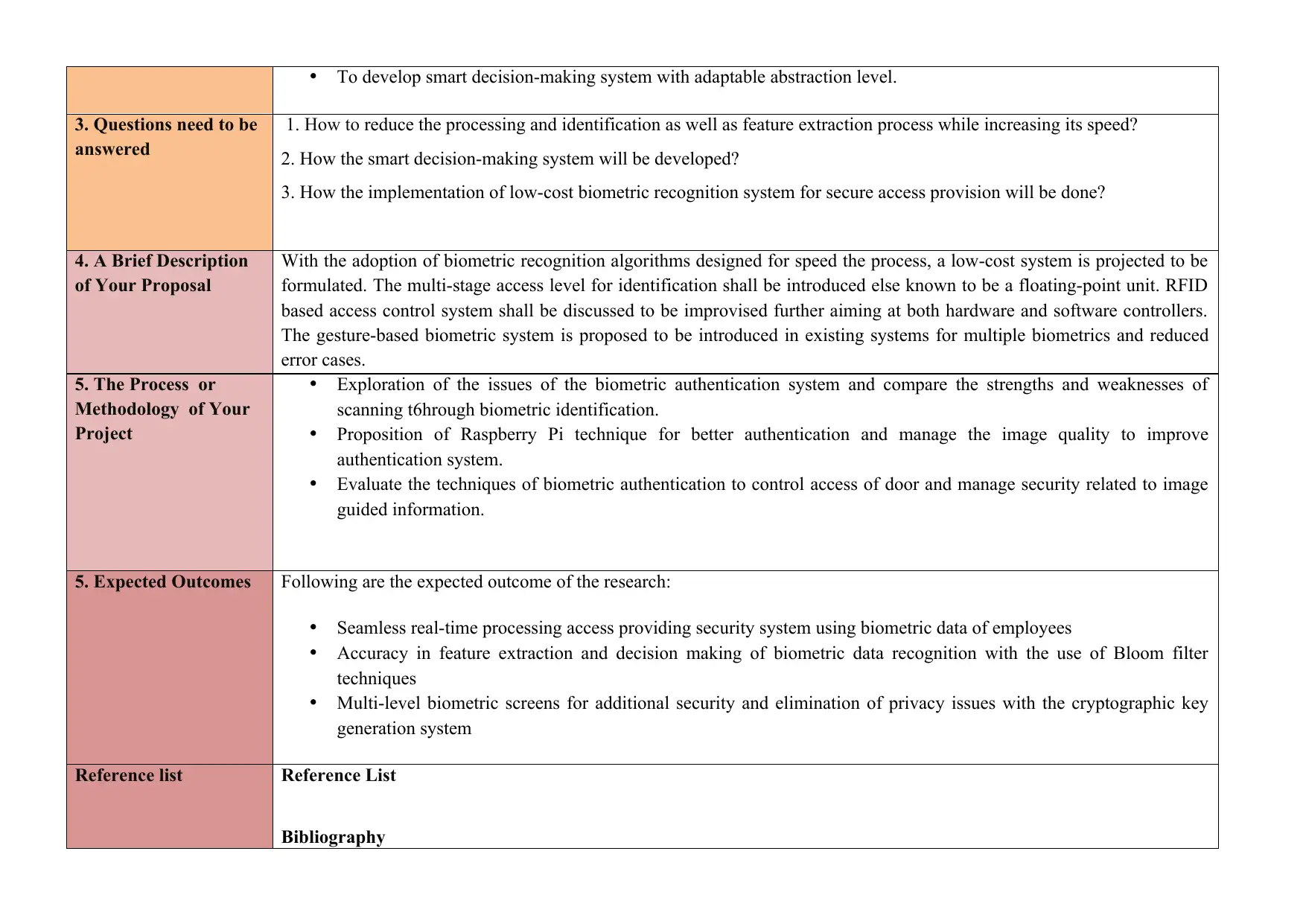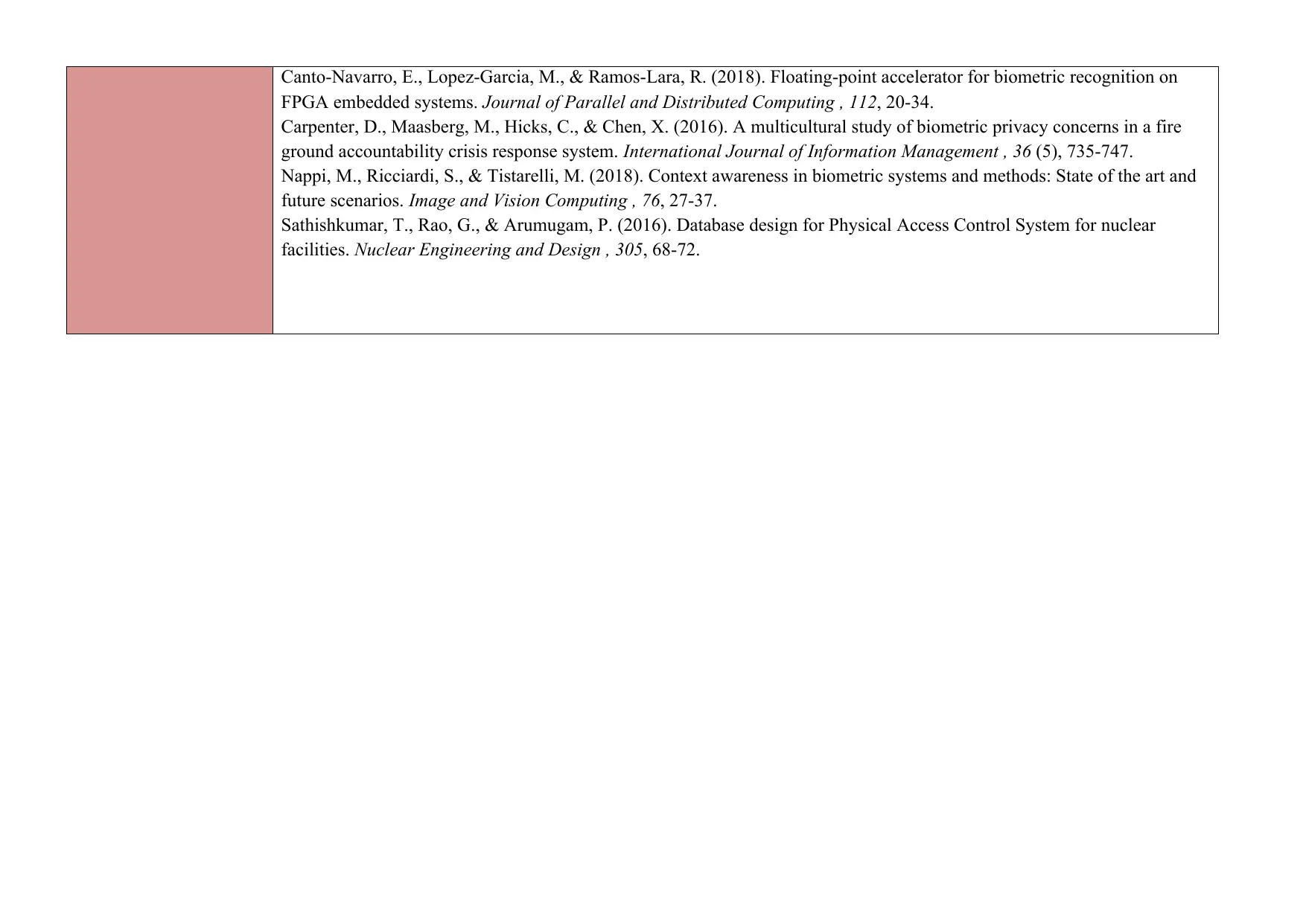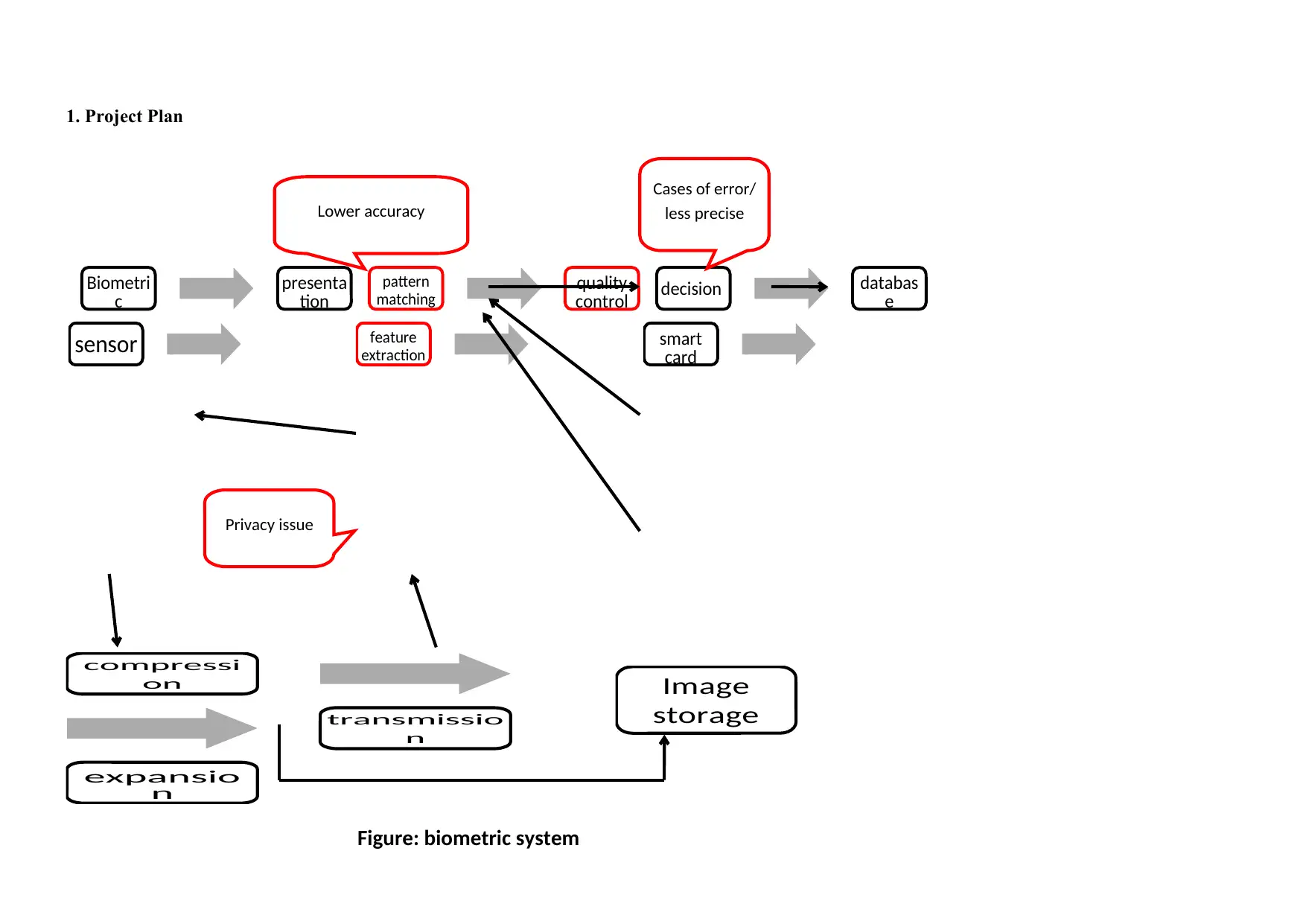ITC571 Project Proposal: Image-Guided Biometric Security Enhancement
VerifiedAdded on 2024/06/28
|4
|854
|221
Project
AI Summary
This project proposal for ITC571 outlines the development of an enhanced biometric door access security system, addressing limitations in current biometric systems such as privacy concerns, processing speed, and image errors. The research aims to develop a low-cost, high-speed biometric recognition system with adaptable abstraction levels for smart decision-making. The proposed methodology involves exploring issues in biometric authentication, proposing Raspberry Pi techniques for improved image quality and authentication, and evaluating biometric techniques for secure door access. Expected outcomes include seamless real-time processing, accuracy in feature extraction using Bloom filter techniques, and multi-level biometric screens for enhanced security and privacy. The proposal references existing research on floating-point accelerators, biometric privacy concerns, context awareness in biometric systems, and database design for physical access control.
1 out of 4










![[object Object]](/_next/static/media/star-bottom.7253800d.svg)